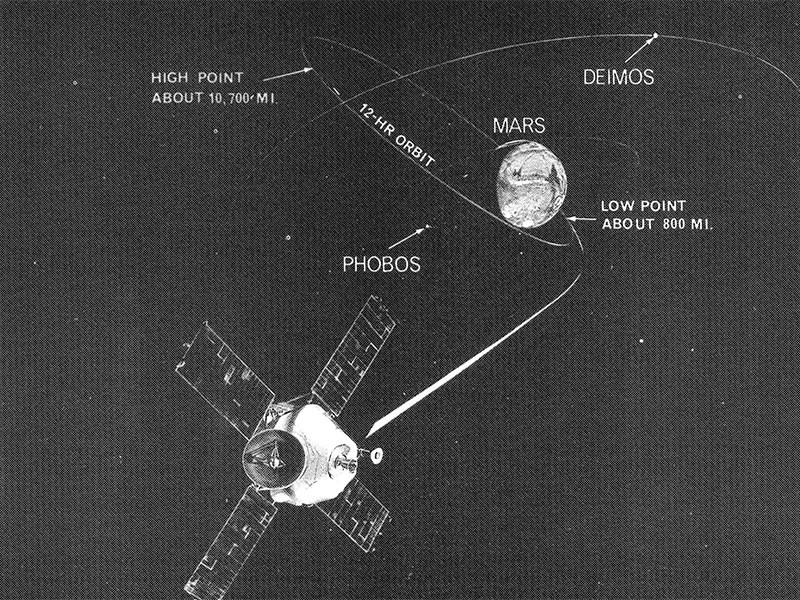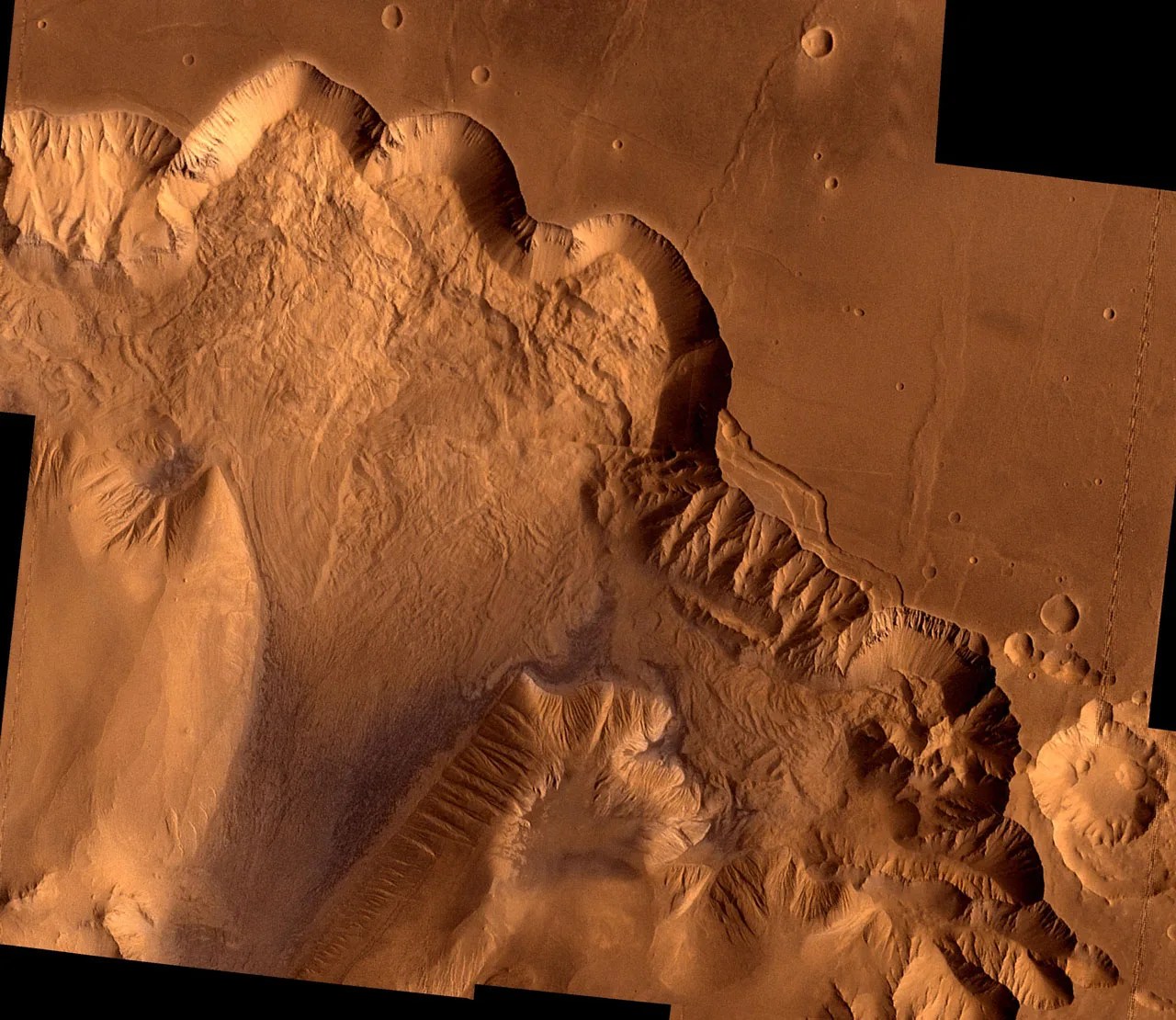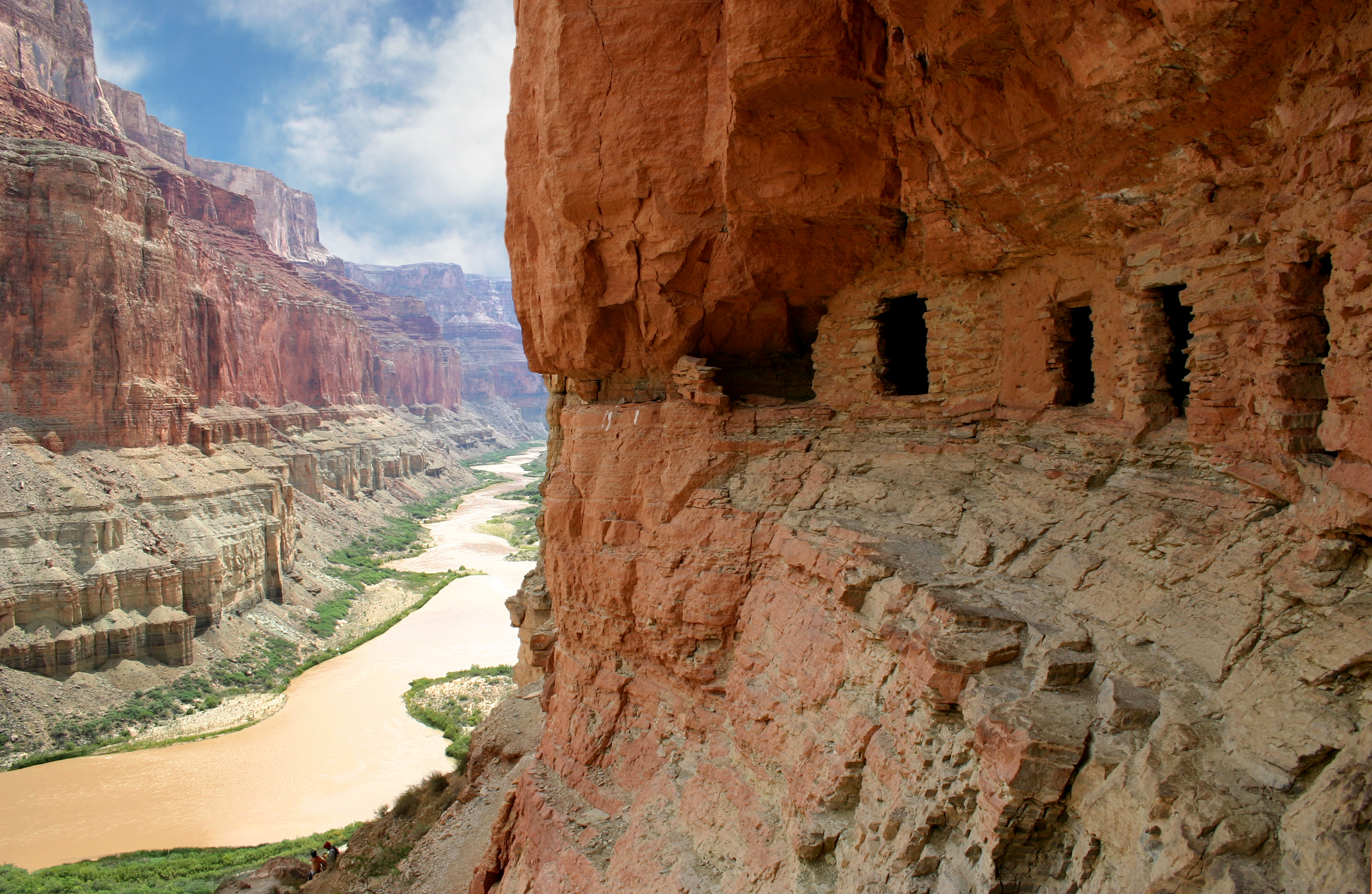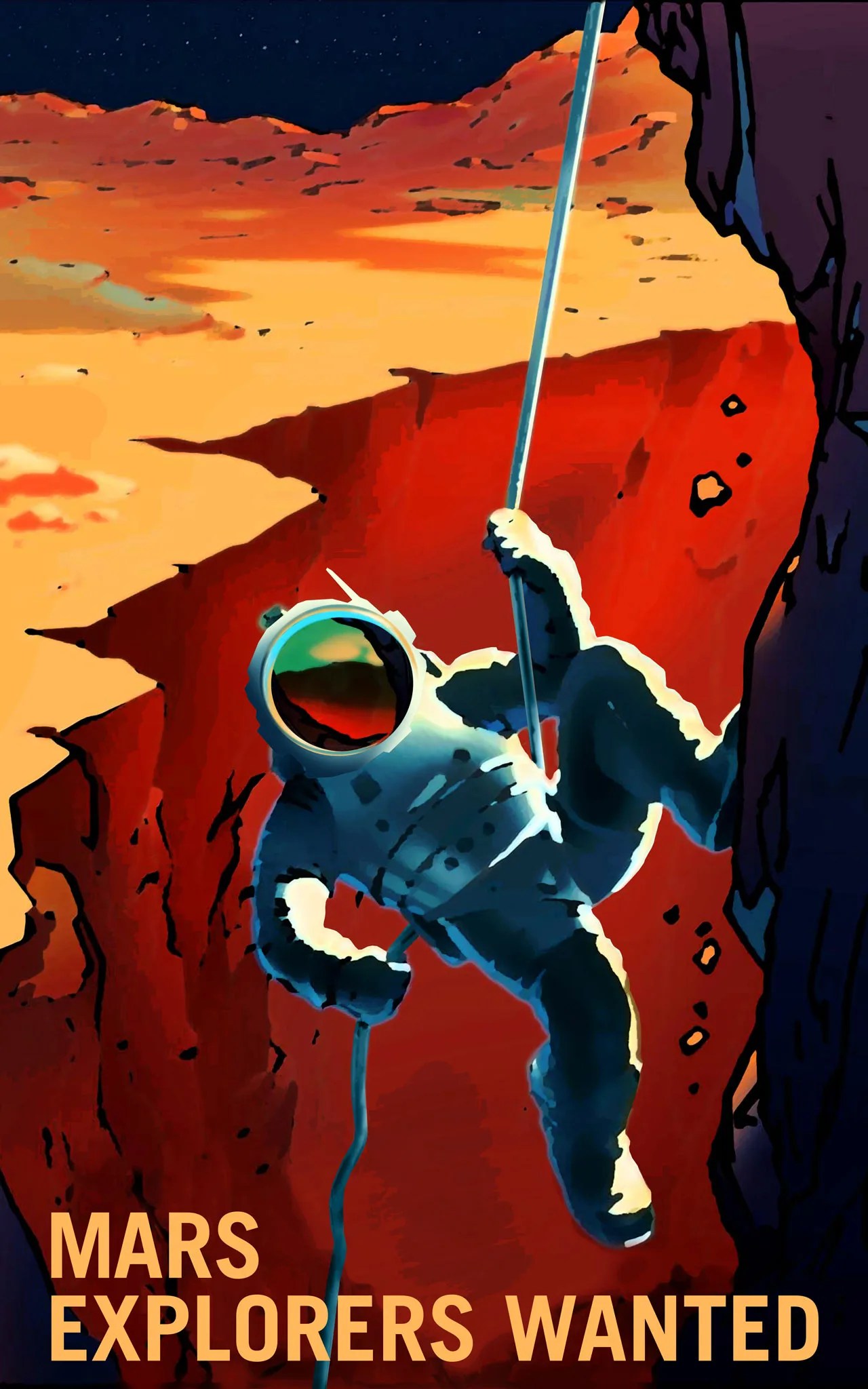8 min read

Each year, millions of visitors pour into Grand Canyon National Park in Arizona. The world-famous vacation destination celebrated its 100th anniversary in 2019. Meanwhile, on another nearby world, another giant canyon awaits its first visitor. Valles Marineris, or the Mariner Valley, is often called the Grand Canyon of Mars. How do the two compare?
The area known today as the Grand Canyon has been home to humans for thousands of years.
Artifacts suggest people were hunting mountain goats, bison and wild plants in the canyon area about 12,000 years ago, and it’s been occupied ever since. Ancient pictographs can still be found on some canyon walls. Several modern tribes consider the Grand Canyon region their homeland, and over 5 million tourists visit Grand Canyon National Park each year.

Valles Marineris, or the Mariner Valley, was first photographed up close in the early 1970s by NASA’s Mariner 9, the first spacecraft to orbit another planet. No humans have visited Mars yet, but the vast canyon system has been photographed extensively by several robotic spacecraft orbiting the Red Planet.
Valles Marineris is the largest known canyon in our solar system. If it were on Earth, it would stretch from New York to California. It runs along the Martian equator and spans about 20 percent (one-fifth) of the entire distance around Mars. It’s about 2,000 miles (3,000 kilometers) long, 370 miles (600 kilometers) wide and 5 miles (8 kilometers) deep.
The Grand Canyon spans a chunk of the northern Arizona desert. It’s typically measured by following the path of the Colorado River at the bottom of the canyon. By that standard, it’s 277 miles (446 kilometers) long, up to 18 miles (29 kilometers) wide and 1 mile (1.6 kilometers) deep.
But the Grand Canyon isn’t the only big canyon on Earth. For example, the Yarlung Tsangpo gorge in southwestern Tibet is three times deeper than the Grand Canyon, reaching more than 3 miles (5 kilometers) deep in places. It’s also longer than the Grand Canyon, stretching over 300 miles (500 kilometers).
The two giant chasms have many differences, but they share a common element in their origins: uplift. The Grand Canyon was carved primarily by the Colorado River and other erosive forces over the past 6 million years. But what enabled the river to carve so deeply into the Arizona landscape was that the Colorado Plateau was raised thousands of feet above sea level during a period of uplift that occurred much earlier, about 40 to 80 million years ago.
Valles Marineris is thought to have formed beginning about 3.5 billion years ago, during the growth of a cluster of giant volcanoes in a region to its west called Tharsis. Molten rock flowed into the area underground, lifting the whole region, and causing faults and fractures. Eventually the cracks widened into a giant scar in the surface of Mars, with most of the activity likely winding down by about 2 billion years ago.
Yes, both the Grand Canyon and Valles Marineris are visible from space. Astronauts on the International Space Station often take pictures of the Grand Canyon. To celebrate the centennial of the U.S National Park Service in 2017, NASA astronaut Jeff Williams took hundreds of images of national parks from the space station, including 13 photographs assembled into a composite image of the Grand Canyon.
You can even take a fly-through tour that includes images from space: Fly-through Grand Canyon Animation
Since Mariner 9 first spotted Valles Marineris, the canyon has been studied and photographed from space by several other spacecraft. Unlike the Grand Canyon, we don’t have any photos from the surface (yet!).

The Grand Canyon’s name is famous worldwide, but the origin of the name is a mystery. John Wesley Powell, the adventurer who explored the canyon in 1869 and 1871, is credited with popularizing the name, but he wasn’t the first to use it. Historian Don Lago says no one can say for sure where the name came from, and historians will likely be fussing over it forever.
In 1908, President Theodore Roosevelt issued a proclamation establishing the Grand Canyon National Monument, and on Feb. 26, 1919, President Woodrow Wilson signed a bill that created Grand Canyon National Park.

We do know how Valles Marineris got its name. It was named for Mariner 9, the NASA spacecraft that discovered the feature while orbiting Mars in 1971–1972. Mariner 9 mapped the whole planet with over 7,000 images. In addition to the giant canyon system, it spotted channels, volcanoes and sand dunes. After it ran out of fuel, Mariner 9 was turned off on Oct. 27, 1972. It’s still in orbit, but is expected to enter the Martian atmosphere around 2022.
In the Grand Canyon, some features are named after the local Native American tribes. Some place names are inspired by the vistas, like Grandview Point and Desert View. Other features are named for early explorers. In 1540, Spanish conquistadors became the first Europeans to see the canyon. They named the Colorado River for its reddish-brown color. Powell Point is named for John Wesley Powell.
On Mars, names for planetary features are suggested by the mission teams that discover them and then they're submitted to the International Astronomical Union, which is the recognized authority for naming celestial bodies and their surface features. After names are approved, they’re entered into the Gazetteer of Planetary Nomenclature and posted on its website.
NASA Treks Team
Geologically, Mars and Earth have a lot in common. They’re both rocky planets. In fact, all of the rocks and minerals identified on Mars to date are also found on Earth.
Earth and Mars also have something else in common: mud. NASA's Curiosity rover drilled two samples at rock targets called "Aberlady" and "Kilmarie" and revealed the highest amounts of clay minerals ever found during its mission. Both targets appear in a selfie taken by the rover on May 12, 2019. Clay often forms in water, which is essential for life as we know it. Curiosity is exploring Mount Sharp to see if the area had conditions that could support life billions of years ago. (Turns out it did!)
The Grand Canyon is in the Arizona desert, so the region is usually dry. It does get rain though, and even some snow on the canyon rim. Temperatures vary, depending on the time of year and whether you’re up on a rim or down in the canyon. The hottest weather is in the inner canyon, where temperatures top 100 degrees Fahrenheit (38 degrees Celsius) in June, July and August. The North Rim gets the coldest temperatures, with winter lows hitting the mid-teens Fahrenheit (about -9 degrees Celsius).
Valles Marineris is also in a desert. In fact, all of Mars is a cold, desert world with wind gusts of up to 90 miles per hour (145 kilometers per hour) — as fast as some hurricanes on Earth, but far less powerful due to the Martian atmosphere being 100 times thinner. Mars also has intense, widespread dust storms. Temperatures on Mars average -81 degrees Fahrenheit (-63 degrees Celsius) and can get as cold as -199 degrees Fahrenheit (-129 degrees Celsius).
Many Native American tribes have close and sacred cultural ties to the Grand Canyon, including the Hualapai, the Havasupai, the Hopi, the Kaibab Band of Paiute, the Navajo Nation, the Pueblo of Zuni, the San Juan Southern Paiute, Paiute Indian Tribe of Utah and the White Mountain Apache.
Some of these tribes consider the Grand Canyon to be their place of origin or emergence and their homeland. The Grand Canyon also is home to many different species: over 1,500 plants, 355 birds, 89 mammals, 47 reptiles, nine amphibians, and 17 fish.

No life has been found in Valles Marineris or anywhere on Mars, but since the 1960s NASA has been looking. Spacecraft — orbiters, landers and rovers — have been studying Mars to understand whether it might ever have had life. In the future, humans will join the adventure, when NASA sends astronauts to Mars. For now, Mars is inhabited entirely by robots, including NASA’s Curiosity rover, the InSight lander and six orbiters: NASA's Mars Odyssey, Mars Reconnaissance Orbiter and MAVEN; ESA's Mars Express and Trace Gas Orbiter and India's Mars Orbiter Mission (also known as MOM). Next up: the new Mars 2020 rover is scheduled to launch for Mars in July 2020.

If you decide to explore the Grand Canyon, expect some company. The canyon is one of America's most popular national parks. NASA astronauts even trained at the Grand Canyon, learning about geology before they headed to the Moon. For this reason, Grand Canyon National Park marked the 50th anniversary of the Apollo 11 lunar landing earlier this year as part of the park's own 100th anniversary celebrations.
You’ll have to settle for virtual tours of the Grand Canyon of Mars, for now. (Travel pro tip: Check out https://trek.nasa.gov/mars/)
Someday, humans of all kinds may hike in Valles Marineris and watch blue sunsets in the twilight as the two Martian moons, Phobos and Deimos, rise in the night sky.






